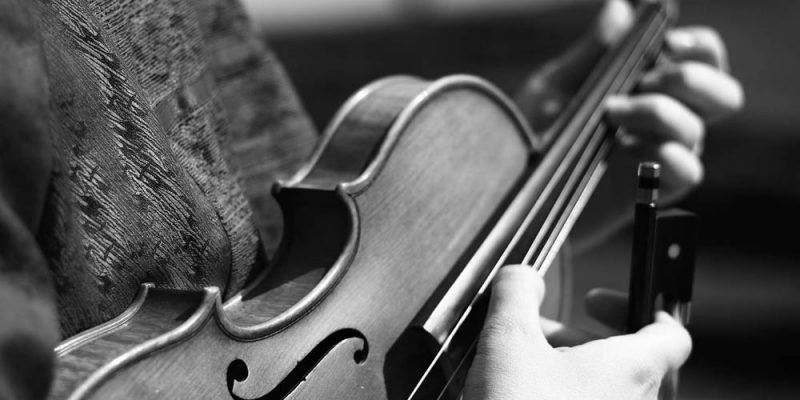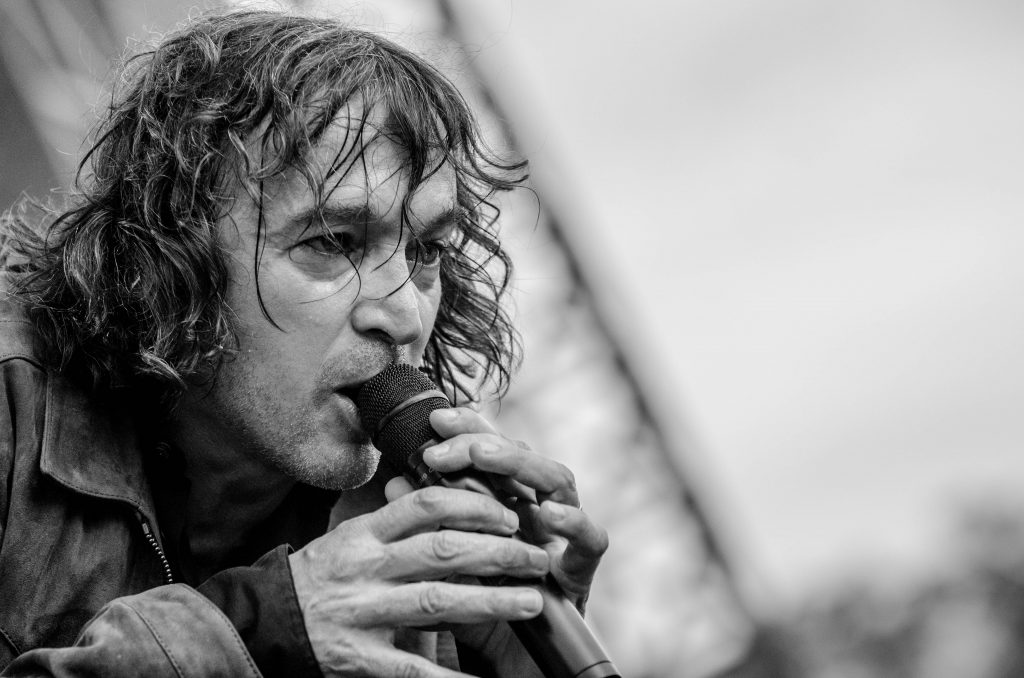How Do I Write a Song?
Learning how to write a song can either be very simple and subconscious, or a sudden meeting with the overwhelming vastness of a blank page. The beauty of writing a song is that it will often come to you when you least expect it, and this will happen more and more with practice.
So – keep trying, keep writing, keep looking for inspiration, and eventually songwriting will become as natural to you as preparing a meal.
For those already having written dozens or even hundreds of songs, the art or gift of song writing is a total blessing – it’s akin to keeping a diary, with added creative drive. Knowing how to write a song is a therapeutic form of expression that we can rely on to help us interpret and understand a situation or series of thoughts. We even have the added blessing of being able to choose whether or not to share our newly written songs with anyone, or keep them for ourselves.
For those who are yet to get started, and are eager to create what those we admire seem to do so effortlessly – the concept can seem out of reach. An easy way to get started with writing a song, is to simply play around with melodies.
Building a Chord Sequence
If you play an instrument, pick it up – otherwise just start singing! Have a notepad or laptop ready to jot down lyrics or ideas, and preferably a recording device – a good tip for pros is to always record your song ideas if you can!
The important thing to remember is that you need to get into the swing of writing songs, so don’t stop until you have a complete idea – even if you think it’s no good, cheesy, or a little too familiar – just veer yourself in a slightly different direction and try to finish up with a three or four minute song.
Listening to music regularly is a great way to get used to how songs are structured and crafted. Some songs will literally tell you how to write something great – Leonard Cohen’s Hallelujah is the perfect example; listen to the words of each part of the song and follow the chords and the notes as you do. His lyrics quite literally tell you how to a write a song.
There’s a definite formula to what sounds good! The problem is, there are now so many pop songs that follow these formulas; it’s become tiresome. You can avoid that fate with a little personality and creative flair – we’ll discuss this in more detail in a later session.
If you find yourself struggling to put chords together, try learning the chords to a song you know – search for the chords or tabs online and write a different melody over it to help you get used to the concept. You can even switch the chords around, try them in reverse – just keep experimenting and you’ll learn pretty quickly what works and what doesn’t.
Basic Songwriting Structure
The standard or most common way to write a song, the kind you’d hear on mainstream radio, is to follow a set structure. Open with an introduction, around 30 seconds is the expected industry standard, then write a verse, followed by a pre-chorus, followed by a chorus. Do the same again, two or three verses is the norm, and for a really strong structure more likely to keep your audience interested – add a bridge or middle eight just before the final (third or fourth) chorus. What separates these sections of the song is the melody, and, if possible, the expression of the storytelling.
For example, if the verse sets the scene – describes what happened – then the pre-chorus could be the ‘how it makes you feel’ section, and the chorus could be all about the resolve – how will you get past it? The change in chords and melody will notify listeners of the change, so the lyrics will be easier to follow and understand – just make sure to keep it on topic.
If your’s is an abstract, less obvious song, lyrically speaking, at least have a definite theme or set of feelings in mind that you can work with, then let your poetic freedom fill in the gaps. There are no laws about how to write a song, and some of our songwriting tips take what you know and turn it on its head; as mentioned, it’s a form of creative freedom, but there are definitely ways to make something other people are more likely to enjoy.
Creating a Melody
If you have a guitar or piano to hand, or a laptop or phone that allows you to formulate a chord progression and loop it, this is the best way to start writing a song. A little bit of music theory will help, but also – just listening to lots of music over time will embed musical awareness in most people; you’ll start to grasp a general idea of how songs are written.
As a general rule, you can hear which chords sound good in a sequence and which do not, but if you do want to develop your skills – it’s worth while brushing up on your music theory. There are many sites online that can help with this, you could even find a teacher, or head down to your local library and learn more about it that way.
Once you have a series of three or four chords on loop, you’re ready to create your melody over the top. (You could use less than three chords if you wish, or more – the great thing about song writing is that it’s a medium for exercising complete creative freedom. There aren’t technically any rules, only guidelines based on what has worked in the past. At the end of the day, these early writing sessions are purely for you, so go ahead and create whatever feels right or sounds right for you in the moment. How to write a song that you like is something you will work out the more you try.)
There are many websites, books, and Youtube clips that will give you a rundown of which notes can be used effectively over which chord sequences. The possibilities are vast, so just play the loop a few times and start singing (or, if preferred, adding a musical riff, perhaps with your guitar).
The more you embrace the sequence, the loop, the more you’ll find yourself immersed in the moment, and the more likely you are to come up with something – your mind will want to fill in the gaps with melody, because that’s what it’s used to hearing. Play around with a few different melodies and see which you enjoy the most.
If you already have some poetry or lyrics to hand for the new song, then sing the various melodies to those and see if any of them express the right idea – see if you come across something that sounds and feels just right for what you’re trying to say. Before long, you’re likely to stumble upon a combination that sounds great – it sounds new, and you’re addicted to singing it over and over.
Voilá! Congratulations on starting your brand new song 🙂
How To Write Lyrics
Lyric writing is an art-form closely linked to poetry. Learning how to write song lyrics comes with practice, and this includes any kind of writing as a means of improving your use of language to convey ideas. Reading is also a big part of it – read books, articles, other people’s lyrics and poems.
When you’re ready, start writing about something, and decide upon line-lengths – maybe you already have your melody, so you should know roughly how many syllables each line will need to make sense within the song. Don’t worry about rhyme too much at first or you’ll end up including words and thoughts simply because they sound a certain way. Decide what you want to imply to begin with, then find rhyming ways to re-word it.
For example – if your song is about feeling happy now that you’re back home..
Instead of:
The weight of the world has been lifted,
Now that I’m back home,
My worries are falling away,
Now that I’m here with you again.
Try something like:
The weight of the world has been lifted
Now that I’m back here
Calmness and peace have been gifted
Now I’m home, I have no fear.
That’s an off the cuff example but you get the idea. I’d do the same again to make it even better, as some of those words are still a little jarring and don’t quite flow the way a good song should.
Visually writing the words out also helps you make sure the length and rhythm of each line matches when it needs to. Work out what you want to say first, then start writing. Or, if that seems too vast – sometimes we don’t know what our songs are about until we’ve written them – simply start writing or rapping or singing to a certain rhythm. Whatever comes out, re-word it afterwards until it flows and makes sense and rhymes naturally.
If you’re stuck for ideas, there are plenty of songwriting prompts you could try out. Just remember that it takes practice. The greatest songs in the world were rarely the first songs ever written by those songwriters. Often there are dozens, even hundreds, of songs that come through before and never see the light of day. Keep working at it.
Coming Up With a Chorus
When it comes to popular music, the average person more likely to respond to and remember a song that has a catchy chorus. That is to say – a chorus or hook that sticks in their mind, one they enjoy singing along to, one they understand and can relate to.
Look at any great pop song from the past, regardless of genre or the year it was written or released, you’ll notice that the chorus is the part most people know it for – and you’ll notice, furthermore, that most of history’s popular songs have had a somewhat striking chorus section.
So, how do you write a chorus for your new song? Well, if you’re working in the rather regimented order of this article, you should already have a basic chord pattern and a verse melody with some sort of concept or lyrical theme by this point. It’s worth mentioning though, a lot of great songwriters will say they thought of the chorus way before anything else. As mentioned earlier, the more you write, the more the ideas will come, and soon enough you’ll just be driving along one day and a massive new chorus melody or idea will come into your head. When this happens – please pull over safely, and once out of harms way – record the idea!
For the purpose of having to write though, planned writing, as opposed to a sudden stream of consciousness, let’s look at how to write a chorus for your new song.
First of all, you’ll need a little of that music theory again to help you take the chord sequence of your verse to the next level. Learn about the natural progression of chords, or perhaps even learn how to play some of your favourite songs, and see if inspiration takes you somewhere pleasant and new. In most cases, the chorus will be a change of notes, perhaps even a change of key, and will have more impact on its audience than the verses.
You’ll need a memorable rhyme scheme for this section in particular; make it something to look forward to, and choose a melody that’s simpler than the verses, so you can repeat the key melody and the key line to make it clear this is the pinnacle of your song. Some examples of this in action are I will always love you and Creep. Everyone knows the chorus, everyone joins in for the chorus, but if we’re being completely honest; regardless of how famous the song is, most people just mumble their way through the verses, waiting for that big, comforting, familiar moment.
How to Write a Song Title – What Makes a Great Song Title?
While sometimes it’s good to begin with a song title and work your way outward, that’s not the most common method, and can be difficult. Usually the song emerges first, then artists create the song title idea from whatever they expressed during the main part of the songwriting process.
Good song titles can be very simple, memorable, even just a line from the chorus. Other times we get long-form song titles that are also memorable but might not even feature in the song – I’ll let those nostalgic indie bands come to mind for you here!
Another idea is to reflect upon the story of the song, or who it’s about, who it’s directed at, and find a catchy tag line or a single word or phrase that would make a good song title.
There’s no strict format for how to write a song title, there are no rules in art and music, but there are ways to reach and connect with a broader audience, and keeping things concise, relevant and interesting are all part of that.
What Mood Are You Setting?
If you’ve written your song in a minor key, you might want to consider the mood of your song on the whole – do you want an uplifting chorus that contrasts with the sadness of the verses, or do you want a hugely emotional song that people can listen to when they’re sad and want to feel understood? It’s entirely up to you how you write your song, but be aware of how the verses, pre-chorus and chorus all sound – individually and together – and whether or not that’s the feeling you want to put across.
If you’re writing an upbeat, energetic song – try to keep it that way for the purpose of practicing your song writing. You can play around with creative freedom more once you’ve gotten into the swing of things. Hopefully, by the end of this article, you’ll know the basic principles of how to write a song, and the rest is up to you!
When is Your Song Finished? When does a Song Become a Song?
In all honesty, once you’ve written two verses and a chorus – you can consider it a job well done. Many song writers write part of an idea and come back to it later, again and again, to fill in the gaps – to really craft something epic and special. Once you’ve written even just the basic principles of your song, if you’re happy with it – make sure you learn it inside out, then the more you play it, the more you’ll be aware of what might be missing from it, or what needs to be changed.
In the same way that it helps to listen to songs you like, to learn about how to write good songs, it can also be useful to listen to songs you don’t like. Why don’t you like them?
Nowadays you can find different singers for any number of songs, so if it’s the voice you don’t like, try to see past that and focus on the melodies and subject matter – is it just not relevant to you? Is it boring? At what point does it get boring, and how might you have written it differently to re-capture your audiences attention?
As with anything in life, practice is the way to get better. Keep writing songs until it becomes a habit, until it’s something that you can’t not do – it’s something you have to do, it’s a creative release. Once you know, you’ll never again have to ask how to write a song – it will, hopefully, always be a part of you.
It doesn’t matter if half or even all of the songs you write are not what you think of as good – the more you write, the closer you’ll get to that one work of art that really speaks volumes. Many successful people are only known for their major success, but so many of them would tell you that there were many, many failures before this; you may have to get it wrong a fair few times before you can get it right. And remember, even the most famous songwriters at one point in their lives didn’t know how to write a song. Everybody has to start somewhere.
Don’t be afraid to get it wrong. Especially not with something so wonderful as songwriting. Try not to see it as a chore or a job, but something you’re doing to feel better – something that makes you enjoy life, makes you feel fulfilled, and something you want to be great at someday. Keep working at it, do it for fun, do it every day, and soon enough you’ll be a natural.
We’ll talk more about the intricate details of how to write songs that mean something in the next issue – hopefully for now though you feel more confident in your knowledge of how to write a song, so you can at least get started. The main thing to remember is to just begin; get started and see where it takes you.
To Wrap Up, Here are some Top Tips to Remember when Learning How To Write a Song:
- Clearly Define Your Intentions
- Get a Strong Concept in Mind
- Settle on a Song Structure
- Create a Catchy Hook
- Write Lyrics that Captivate or Tell a Story
- Keep Melodies Simple and Satisfying
- Play Around With & Practice Rhyme Schemes
- Use Repetition to Connect, But Don’t Overload
- Collaborate – Two Minds are Better than One!
- Refresh and Refine; Edit and Develop Your Song
Enjoy the songwriting process!
Photos from Pexels.



